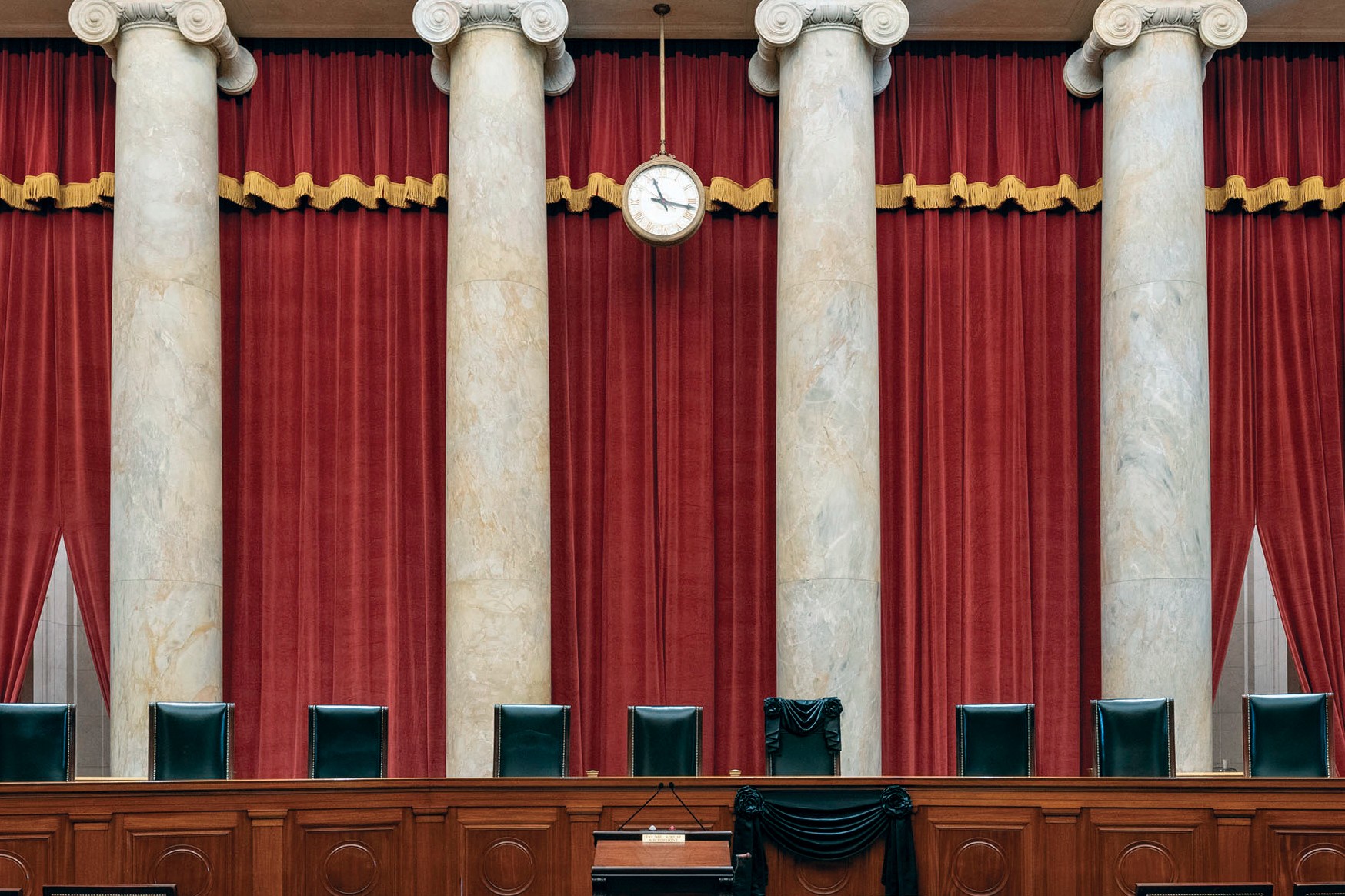Empty Chairs
Vol. 104 No. 3 (2020-21) | Judges on the March | Download PDF Version of Article
The sudden deaths of United States Supreme Court Associate Justice Ruth Bader Ginsburg and Associate Justice Antonin Scalia ignited political firestorms regarding the appropriate timeline for confirming a new justice in a presidential election year. Associate Justice Amy Coney Barrett’s confirmation revived debates about potential expansion of the Court’s size. While the recent past and uncertain future of the Court may feel unusually turbulent, history reveals some parallels.
The eight-year tenure of Justice Stanley Matthews in the late 19th century was bookended in tumult: first, a controversy surrounding his razor-thin confirmation, and then a succession of deaths among sitting justices. President Rutherford B. Hayes nominated Matthews, his former college classmate, to the Court in January 1881 to replace the recently retired Noah Swayne. The selection of an Ohio attorney and politician generated scathing editorials by the press concerning Matthews’s potential allegiance to the railroad companies he had often defended in his legal practice.
The Senate Judiciary Committee, stacked with several of Matthews’s former political rivals, took no action on his nomination during the 46th Congress. President James Garfield re-nominated Matthews in May 1881, to the surprise of many. After rancorous debate, Justice Matthews was confirmed in the Senate by a single vote — a distinction that has yet to be repeated. Thomas Nast memorialized the notorious Court appointment in a Harper’s Weekly cartoon, showing Matthews tipping the balance of a board labeled “U.S. Supreme Court Bench,” captioned “On — By the Skin of His Teeth.”
Associate Justice Matthews’s first term opened in October 1881 with a threadbare bench of six. Stephen Field was vacationing in Europe until December. Nathan Clifford had resigned in the spring and then died that summer; his successor, Horace Gray, did not arrive until January 1882. Ward Hunt had been sidelined by illness for more than two years; when Matthews had to recuse himself from an early case for a conflict of interest, Hunt returned to the bench temporarily in order to achieve the required quorum.
To make matters worse, the frequently short-handed Court that Matthews joined was buckling under the weight of a grueling workload. By the late 1880s, the Court’s annual docket was in the thousands — more than double its caseload from 1870. Beyond the relentless pace in Washington, justices faced the further strain of “riding circuit” to preside over trials in assigned circuit courts around the country.
Toward the end of Matthews’s time on the Court, four sitting justices died in office in as many years. First was 64-year-old William Burnham Woods, who died of dropsy in May 1887; his successor, Lucius Q.C. Lamar, did not assume the seat until January 1888. Chief Justice Morrison Waite’s service ended in March 1888, after he completed drafting the mammoth Alexander Graham Bell Telephone Cases. Though the ailing 71-year-old Chief insisted on coming to Court for the opinion’s announcement, Justice Samuel Blatchford had to read the opinion instead. Waite’s pneumonia overtook him three days later. The new Chief Justice, Melville Fuller, assumed his seat with the next October term.
By then, Stanley Matthews’s chair was also empty, as the 75-year-old justice was suffering from the effects of an ailment caught during New York’s Great Blizzard of 1888. Matthews took no part in arguments during October Term 1888 and finally succumbed to his illness in March 1889. His successor, David Brewer, assumed Matthews’s seat 290 days after the former justice’s death.
The Court’s docket continued its malignant growth, ballooning to more than 1,800 cases in 1890. That year, Matthews’s former colleague Justice Samuel Miller left another empty chair after suffering a fatal stroke on his way home from the Court in October 1890. Miller’s seat remained vacant for 85 days, until Henry Billings Brown took his oath the following January.
Just a few weeks after Justice Brown’s arrival, the Judiciary Act of 1891 established the intermediate Circuit Courts of Appeals. The new courts eliminated the justices’ circuit-riding duties and immediately reduced the Court’s filings and workload, but relief came too late for Matthews and several of his former brethren. The next death of a sitting justice (Joseph P. Bradley) would not come until January 1892, making 1891 the most stable Supreme Court bench in nearly half a decade.

